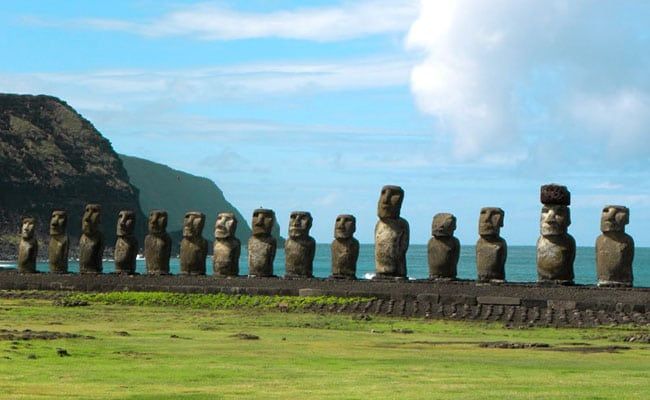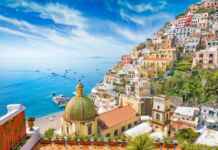The Chilean Polynesian Island of the Easter Island has hundreds of statues carved out of rock in human formcalled Moai. These were carved by the Rapa Nui people between the year 1250 and 1500. First carved at the main Moai quarry, RanoRaraku and then transported from there to stone platforms calledahu on the island’s perimeter, the production and transportation of these statues is a remarkable feat of physical strength and creativity. The dedication and effort that the Rapa Nui people put into the Moai is truly commendable.
The moai are the living faces of the deified ancestors of the Rapa Nui people but may have also been regarded as the embodiment of powerful living or former chiefs. Debates among scholars still go on today regarding the true purpose of the creation of the moai, leaving people wondering why the Rapa Nui people ever took on such a Herculean task.
Almost all the moai have overly large heads and so have become famous in the world as “Easter Island Heads”. Of all the moai erected the tallest one is called Paro standing almost 10 metres tall and the heaviest one called AhuTongariki that weighs a staggering 82 tonnes. All the moai, except for seven at AhuAkivi have their backs to the ocean.
Easter Island statues have many characteristic features like large, broad noses, strong chins with rectangle shape eye balls and deep eye slits. Some medical experts have offered suggestion that the characteristics of moai represent essential signs of leprosy in reversed, over-corrected form. Some of the moai are seen to have ‘Pukao’ or hats on their heads which were actually carved separately and then placed on the heads of the statues.
Another interesting debate sparked by the moai was regarding its transportation. Earliest theories suggested that the moai were transported using wooden sleds, rollers and levelled tracks along the island. It also explained the scarcity of tress on the island when the Europeans had first arrived. But a more recent theory suggests that the statues may have been “walked” from the quarry with an ingenious use of ropes. The theory stemmed from stories that many people used their divine power to command these statues to walk. Many scholars and experts have conducted experiments where they tied ropes to the head of mock statues with people on either side of the statues and swinging it from side to side, making the statue “walk”. The fact that the bottom of the statues were damaged and there have been many moai fallen on the road add to the credibility of this theory.
The moai have proven to be very popular with the tourists. Extensive conservation work has taken place to preserve the moai as weathering and other natural phenomenon are taking their toll on the statues. Eleven or more moai have been relocated to museums. High season on Rapa Nui is the Southern Hemisphere summer-January to March. The winter can get a bit chilly but it is pleasant all year round.
The beauty of the Polynesian Islands along with the magnificence of the Moai is sure to leave you in awe.










